7 days in Tokyo: Our complete Tokyo itinerary
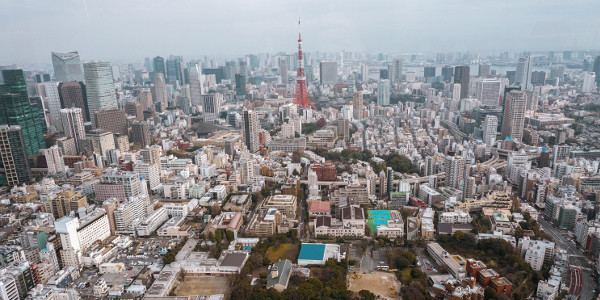
In the winter of 2018 we spent 7 days in the metropolis Tokyo. Tokyo is an amazing city with so many things to do and to see and one week isn’t nearly enough to cover it all. Read on to find out what we did in our complete 7-day Tokyo itinerary!
Day one
Akihabara
It was our first day in Japan and as we got to our Airbnb in the middle of the night/early morning, we decided to take things easy on our first day. After sleeping late, we went to the area of Akihabara. Akihabara is also known as Electric Town and it’s located in the area around Akihabara Station. It’s a shopping district where you can mostly find anime, manga, and video games. There are also lots of arcades around every corner where you can try your luck to get a cute stuffed animal (Pikachu, anyone?). We expected Akihabara to be a huge area with never ending shops and lights. However, it’s just a main street and a few side streets, so we were a tad let down. If you walk quickly you can see everything in 25 minutes. Nevertheless, we spend quite some time visiting shops, arcades and malls in the area and Joop even won Mika a Mew, yay!
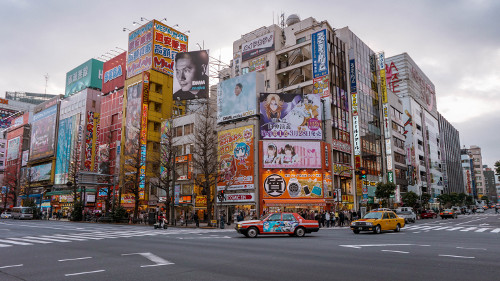
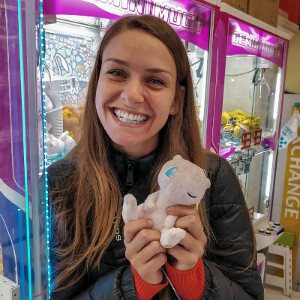
Mika being happy with her stuffed Mew
Day two
Shibuya crossing
On our second day in Tokyo, we visited the area of Shibuya and of course the Shibuya crossing. The Shibuya crossing is absolutely a must-visit when you’re in Tokyo. You can find the Shibuya crossing in front of the Shibuya Station Hachiko exit. We spent almost the entire afternoon at the crossing, taking pictures of different perspectives and overlooking the masses of people. The area surrounding the crossing is full of shops and malls, so it’s definitely worth walking around to do some shopping. When it got dark, we returned to the crossing to take some more pictures. If you don’t have all day and want to take nice pictures, go to the Shibuya crossing after sunset. With all the lights surrounding the crossing, your photos will really be coming alive.
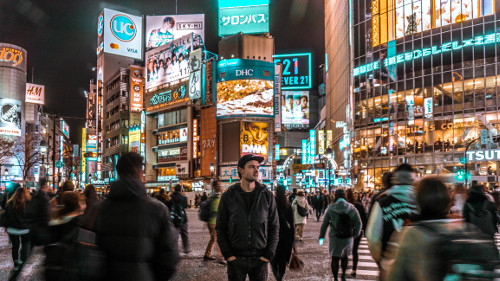
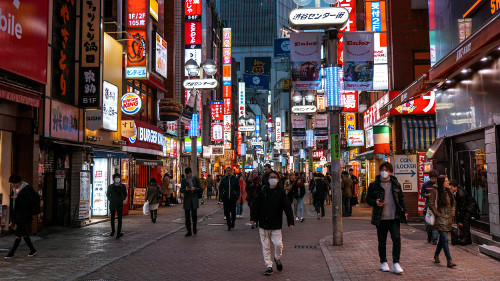
Hachiko statue
Close to the Shibuya crossing you will find the Hachiko statue. You’ll walk past the statue when you take the Hachiko exit of Shibuya Station to the crossing. The story of Hachiko is quite sad. Hachiko was a dog owned by professor Ueno of the Tokyo Imperial University. Ueno travelled to his work by train, and Hachiko would meet him at the end of his work day at the Shibuya Station. One day, Ueno died during work and he never returned to Shibuya Station where Hachiko awaited him. The next nine years after Ueno’s death, Hachiko waited at the train station, precisely at the time the train was due, for Ueno’s return. The statue of Hachiko is a pretty famous spot in Tokyo and people are always lining up to take pictures with the statue. The story was made into a movie in 1987, with an American remake in 2009.
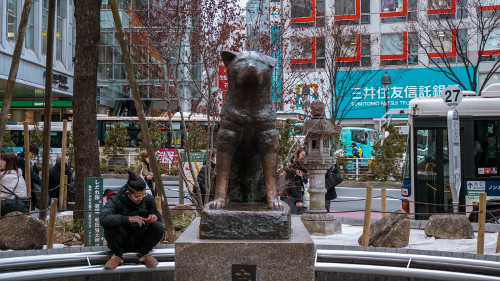
Rainbow bridge
In the evening, we decided to take photos of the Rainbow Bridge. After sunset, the Rainbow Bridge is either lit up in rainbow colors or white and green. When we visited, the bridge was lit up in white and green colors. We went to the shore of Odaiba to get a good view of the bridge and the city skyline behind it. As you have a nice overview over the city, this place is also worth visiting during sunset. Don’t forget to bring a tripod for those low-light evening shots (as we did…).
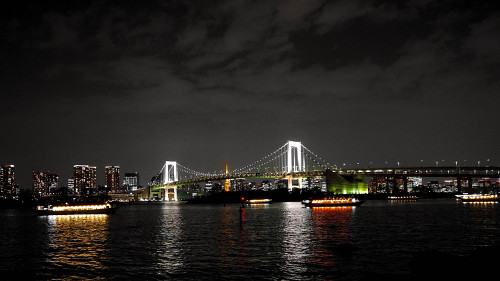
Day three
Mori Art Museum
The Indoor Observation Deck on the 52nd floor of the Mori Art Museum is a must-visit if you like city views. The architecture of the observation deck is beautiful with large windows all around the place. We visited in the middle of the day and it was not too crowded. You could easily sit in front of the windows and take photos of the view without anyone interrupting the photos. There’s also an open-air Sky Deck, but this is not included in the ticket price. As it was mid-winter and pretty cold, we decided to stay inside and save some money, and body warmth.
Prices:
JPY 1800 (adult)
JPY 1200 (university student - old university cards of foreign universities work, don’t ask why we know this)
Check this website for current ticket prices.
Opening hours observation deck
Weekdays and holidays: 10.00-23.00 (last admission: 22.30)
Fridays, Saturdays and days before holidays: 10.00-01.00 (last admission: 00.00)
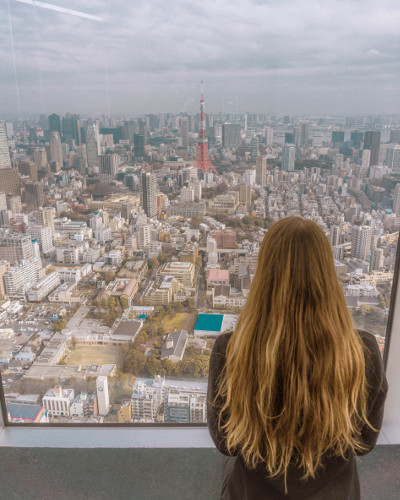
Tokyo Tower
From the Mori Art Museum it’s half an hour walk to the Tokyo Tower. The Tokyo Tower looks like a red and white version of the Eiffel Tower. It’s used as a communication and observation tower and it’s the second-largest structure in Japan (332.9m). Walking to the tower, there are a few nice spots to photograph it from the streets. There’s a four-story building (FootTown) located directly under the tower with museums, restaurants and shops. From there, you can visit the two observation decks: the Main Deck (150m) and the Top Deck (249.6m). We decided to stay on the ground, as we just had a nice view of the city from the Mori Art Museum, and we just wanted to take in the sights of the Tower.
Prices:
Main Deck: JPY 1200 (adult)
Main Deck + Top Deck: JPY 2800 online or JPY 3000 at the ticket counter (adult)
Check this website for current ticket prices.
Opening hours
Daily: 09.00-23.00
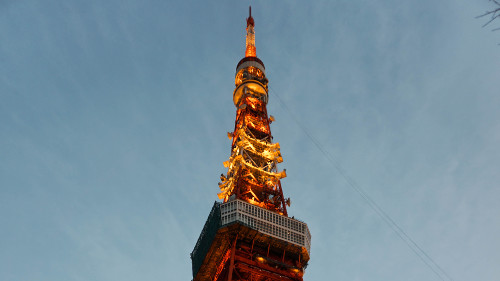
Day four
Jikken Bridge
Our first stop on our fourth day was the Jikken Bridge. This bridge was half an hour walk from our Airbnb and offers a perfect view and, if you’re lucky, a perfect reflection of the Tokyo SkyTree. Jikken Bridge is a very Instagrammable photo spot and worth stopping by if you’re in the neighborhood!
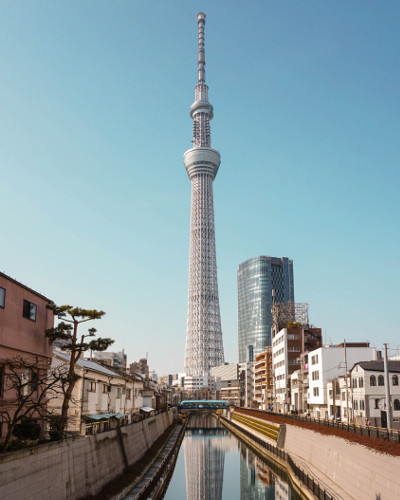
Tokyo SkyTree
After visiting the photo spot, we went to the SkyTree itself. The Tokyo SkyTree, at 634m, is the tallest structure of Japan and the second-tallest structure in the world. It’s used as television and radio broadcast site and of course there is also an observation deck open to visitors. Tokyo Solamachi is a pretty big mall with lots of stores and restaurants and is located at the foot of the tower. You can get access to the SkyTree from the 4th floor of the mall. We were there on a Sunday afternoon and the line to get tickets was so long, we didn’t even bother. If you want to visit the SkyTree, we recommend to arrive early, especially on the weekends (or you can buy the fast SkyTree ticket). On a clear day, you can even see Mt. Fuji!
Prices (adults):
Floor 350: JPY 2100 (weekdays) or JPY 2300 (holidays/weekends)
Floor 450: JPY 1000 (weekdays) or JPY 1100 (holidays/weekends)
Combo floor 350+450: JPY 3100 (weekdays) or JPY 3400 (holidays/weekends)
Fast SkyTree ticket, floor 350: JPY 3200
Fast SkyTree ticket, combo floor 350+450: JPY 4200
Please note that the Fast SkyTree tickets are only for international visitors.
Check this website for current ticket prices.
Opening hours
Daily: 8.00-22.00
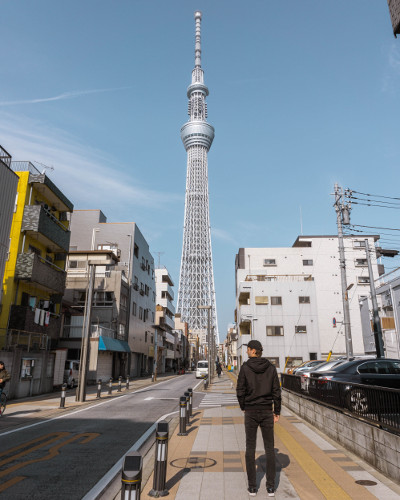
Pokémon Center SkyTree Town
Visiting a Pokémon Center while you’re in Japan is a must! We visited the Pokémon Center SkyTree Town which is in Tokyo Solamachi mall. The signs in Solamachi were a bit confusing, but eventually we found it. You can find the Pokémon Center on the 4th floor of the mall, on the eastern side.
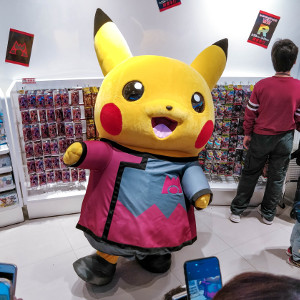
Asakusa Culture Tourist Information Center
From the Tokyo SkyTree it’s a 20-minute walk to the Asakusa Culture Tourist Information Center. The tourist center has a free observation deck on the 7th floor with views of the Tokyo SkyTree as well as over Asakusa and Senso-ji. We were at the observation deck during sunset which is highly recommendable!
Opening hours
Daily: 09.00-20.00

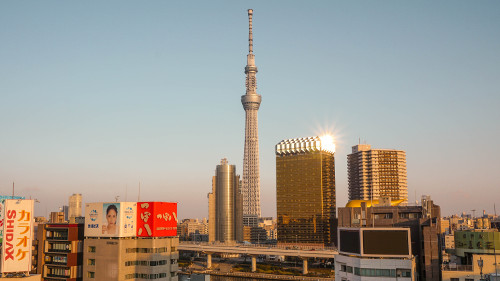
Senso-ji
Senso-ji is the oldest, and probably most-famous, temple in Tokyo. You enter the temple grounds through the Kaminarimon (Thunder Gate), which will lead to Nakamise-Dori, a 250m street lined with 89 small shops. The Hozomon (Treasure House Gate) is the entrance gate to the inner complex, where the five-story pagoda and the main hall are located. We visited during peak hour and it was absolutely packed. If you don’t mind the crowds, visiting on a Sunday is recommendable as lots of people are dressed in Japanese traditional clothing (Kimono). Senso-ji is located in Asakusa, which is a traditional neighborhood in Japan. It’s a real tourist attraction, but it’s fun to walk around the area!
Opening hours
Temple grounds: always open
Main hall: 06.00-17.00 (daily)
Nakamise-Dori: 09.00-19.00 (daily, may differ per shop)
No entrance fee.
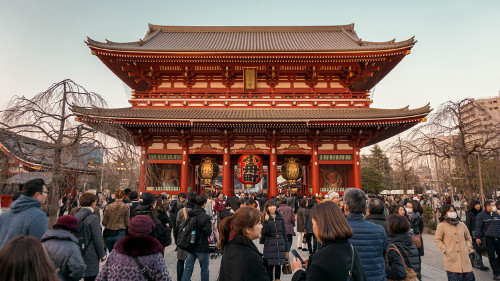
Day five
Rikugi-en
Our fifth day was a special day. We planned to go to Rikugi-en, a traditional Japanese garden, and there was snow forecasted for that day. We imagined it to be some light snow, which would melt the moment it hits the ground. When we left our Airbnb, it had just started snowing. We traveled to the garden by metro, which was a 30-minute ride underground, and once we exited the metro station, everything was covered in a 5-10cm thick layer of snow. Boy that escalated quickly. The garden was completely covered in snow and it looked like a winter wonderland! After spending 1-2 hours in the garden taking lots of pictures, we were completely frozen as we weren’t prepared for so much snow. If you ever find yourself in Tokyo while it’s snowing, go to the Rikugi-en Garden: it won’t disappoint.
Price:
JPY 300 (adult)
Opening hours
Daily: 09.00-17.00
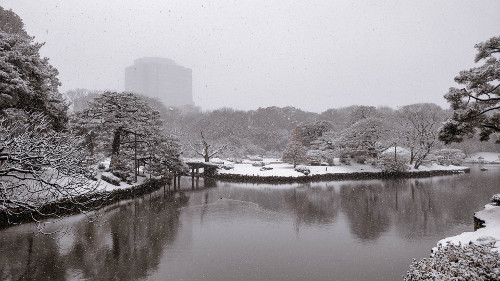
Day six
Gotokuji
Gotokuji was the last temple left on our list. Gotokuji is known as the “Lucky Cat” temple and it’s full of beckoning cat-figures (Maneki Neko). There are different stories circulating the Internet about the origins of the temple, but they all feature a luck-bringing cat. All Maneki Neko are offered by visitors to the temple, the beckoning cat is believed to make wishes come true. You can buy a beckoning cat figure at the administration building of the temple grounds. Besides all those cute cat figures, the temple grounds are very pretty too. There’s a beautiful pagoda and if you visit during Spring, you might be lucky and see the cherry blossoms in full bloom.
Opening hours:
Daily: 06.00-18.00
No entrance fee.
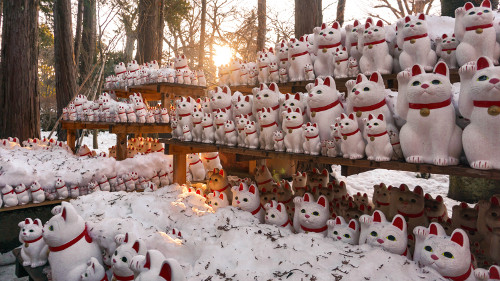
Tokyo Metropolitan Government Building observatories
The Tokyo Metropolitan government is housed in the Tokyo Metropolitan Government Building. The architecture of the building is very impressive. The building is huge with 45 floors above ground. There are two panoramic observation decks in each tower on the highest floor. We initially planned to go to the observation deck, but it was already getting dark and we were getting hungry. We admired the building from the ground which was very impressive already. If you want to take pictures from the view, we would advise you to go before sunset as we read that there are a lot of window reflections when it’s dark.
Observation deck opening hours:
Daily: 09.30-23.00
No entrance fee.

Shinjuku
On our last evening in Tokyo, we decided to explore the area of Shinjuku. Shinjuku is a major commercial and administrative center. Surrounding Shinjuku Station, there are many restaurants, shops and malls. It’s a very lively area and this was also the first place in Tokyo where we saw other Western tourists, and quite a few at that.
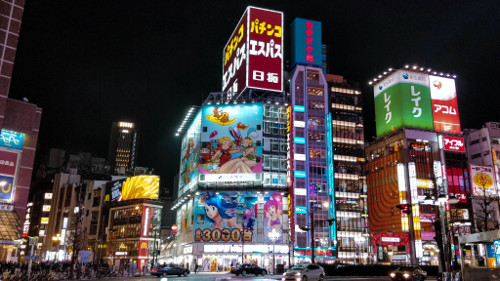
Day seven
Travel day
Our seventh day was a travel day. We got up early to catch the Shinkansen to Ishiuchi for some snowboarding fun!
Getting around Tokyo
Tokyo has the most complex public transport system we’ve ever experienced and it’s not only because of the language barrier. Unlike every other city we’ve ever been to, the urban rail system in Tokyo are owned by several rail companies (over 11). It happens very often that you need to change rail operators at a certain station to continue your journey. It’s not just switching trains to another platform, it’s switching buildings. This is very time-consuming as it’s often hard to find the right exit to the other rail operator, and the stations are often huge with many shops so it takes a very long time to get out of the one station and into the other (especially when both stations are underground). Getting around in Tokyo hardly ever takes less than 30 minutes, not counting the time you need to find the right station and buying the right ticket from the right operator.
Japan Rail Pass
A great way of traveling through Japan is by Shinkansen (or also known as bullet train). The Shinkansen is a network of high speed trains that connects all regions of Japan and it’s the fastest and most reliable way of traveling in Japan. When you’re visiting multiple destinations in Japan, the Japan Rail Pass might be a great choice for you. The JR Pass offers unlimited rides on JR trains (including the Shinkansen) for one, two or three weeks at a very affordable price. Check out this website for current prices and to book your JR Pass.
Have you ever been to Tokyo? Let us know in the comments below!
Be sure to check out more of our visual experiences on Instagram!
More Japan
Snowboarding in Japan: Our experiences of ski resort Ishiuchi Maruyama

